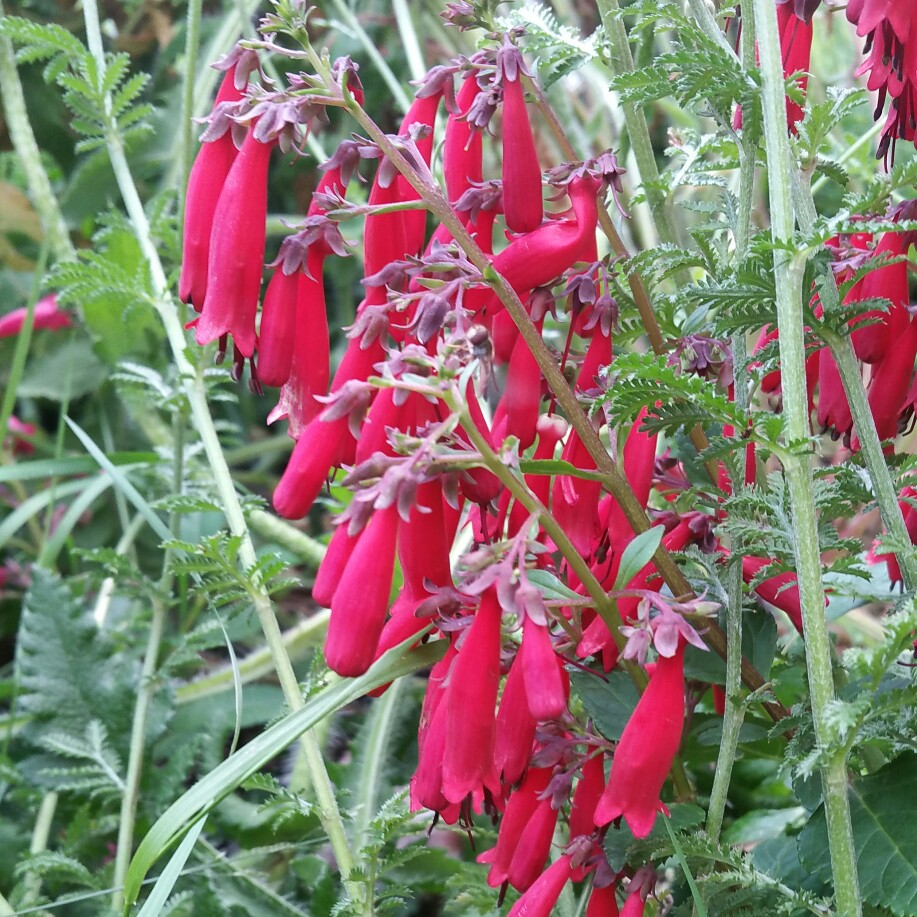
Phygelius capensis 'Magenta'
Cape Figwort 'Magenta'
Phygelius are evergreen, or semi-evergreen shrubs, usually grown as herbaceous perennials in cooler areas. They have simple leaves and large clusters of tubular fuchsia-like flowers in Summer and Autumn. They are hardy to -10 deg.C. 'Magenta' has tall, dark ruby stems show off loose clusters of vivid, deep magenta flowers above compact mounds of deep green foliage. Needs little care once established. A must for mixed borders, succulent or naturalized landscapes, where it will add a vibrant burst of color. Perfect for bird and butterfly gardens. Semi-evergreen in mildest winter climates.
Contributed by @iankestrey
-
Full sun
-
Occasional watering
-
Frost Hardy: 23F (-5°C)
-
Moist and free draining
Common name
Cape Figwort 'Magenta'
Latin name
Phygelius capensis 'Magenta'
type
Herbaceous Perennial
family
Scrophulariaceae
ph
5.5 - 8.0 Acid - Neutral
Plant & bloom calendar
-
Best time to plant
-
When the plant will bloom
full grown dimensions
 0.50 M
0.75 M
0.50 M
0.75 M
Phygelius capensis 'Magenta'
Phygelius are evergreen, or semi-evergreen shrubs, usually grown as herbaceous perennials in cooler areas. They have simple leaves and large clusters of tubular fuchsia-like flowers in Summer and Autumn. They are hardy to -10 deg.C. 'Magenta' has tall, dark ruby stems show off loose clusters of vivid, deep magenta flowers above compact mounds of deep green foliage. Needs little care once established. A must for mixed borders, succulent or naturalized landscapes, where it will add a vibrant burst of color. Perfect for bird and butterfly gardens. Semi-evergreen in mildest winter climates.
Flowering
From Early Summer TO Early Autumn
Cape fuchsias bear fuchsia-like, tubular flowers from early / mid Summer to early Autumn
Planting
From Early Spring TO Mid Spring
Plant in moist but free-draining, fertile soil in a sunny position,
Propagate by cuttings
From Late Spring TO Early Summer
Take softwood cuttings from new growth early in the day in Spring or early Summer. Cut, neatly, a 4" approx. piece of a non-flowering shoot, pinch out the tip, and cut off the bottom leaves. Dip the bottom of the cutting in hormone rooting powder, and carefully place in a pot of cutting compost with the leaves just above the level of the compost. Water, label, cover with a polythene bag, and place in a warm, bright place, out of direct sunlight. Take the polythene bag off periodically for a while for ventilation (at least twice a week)
Propagate by suckers
From Early Spring TO Late Spring
Suckers that have rooted can be carefully dug out and put into pots for a year before planting out into the garden.










